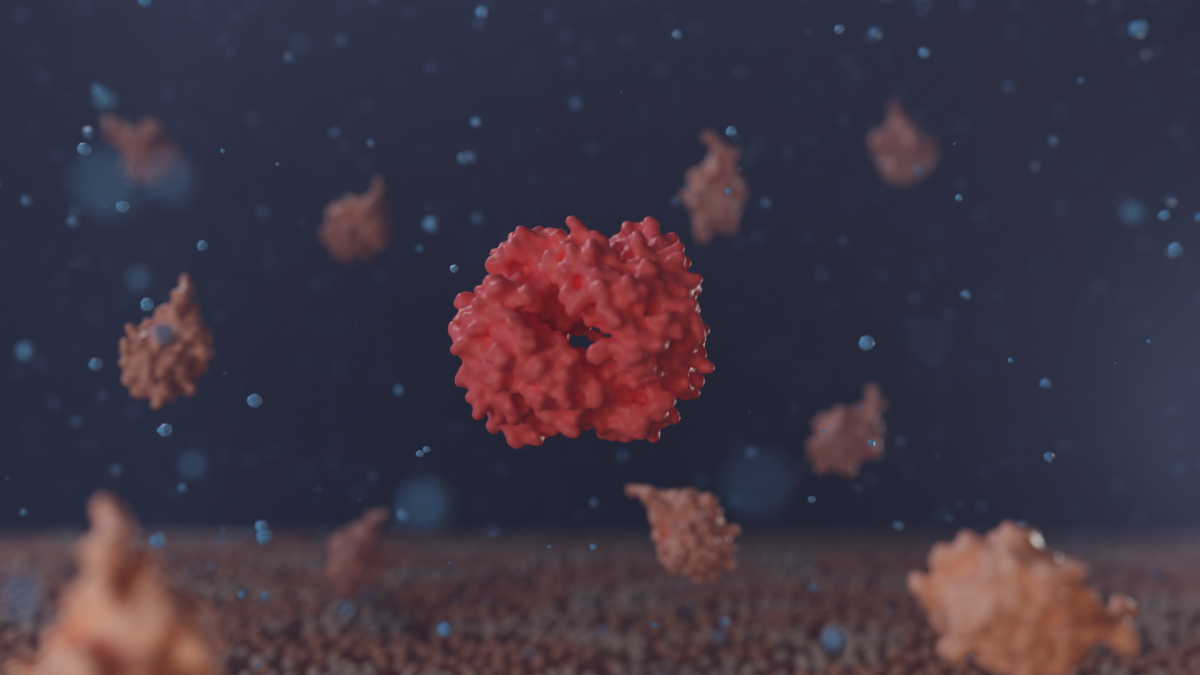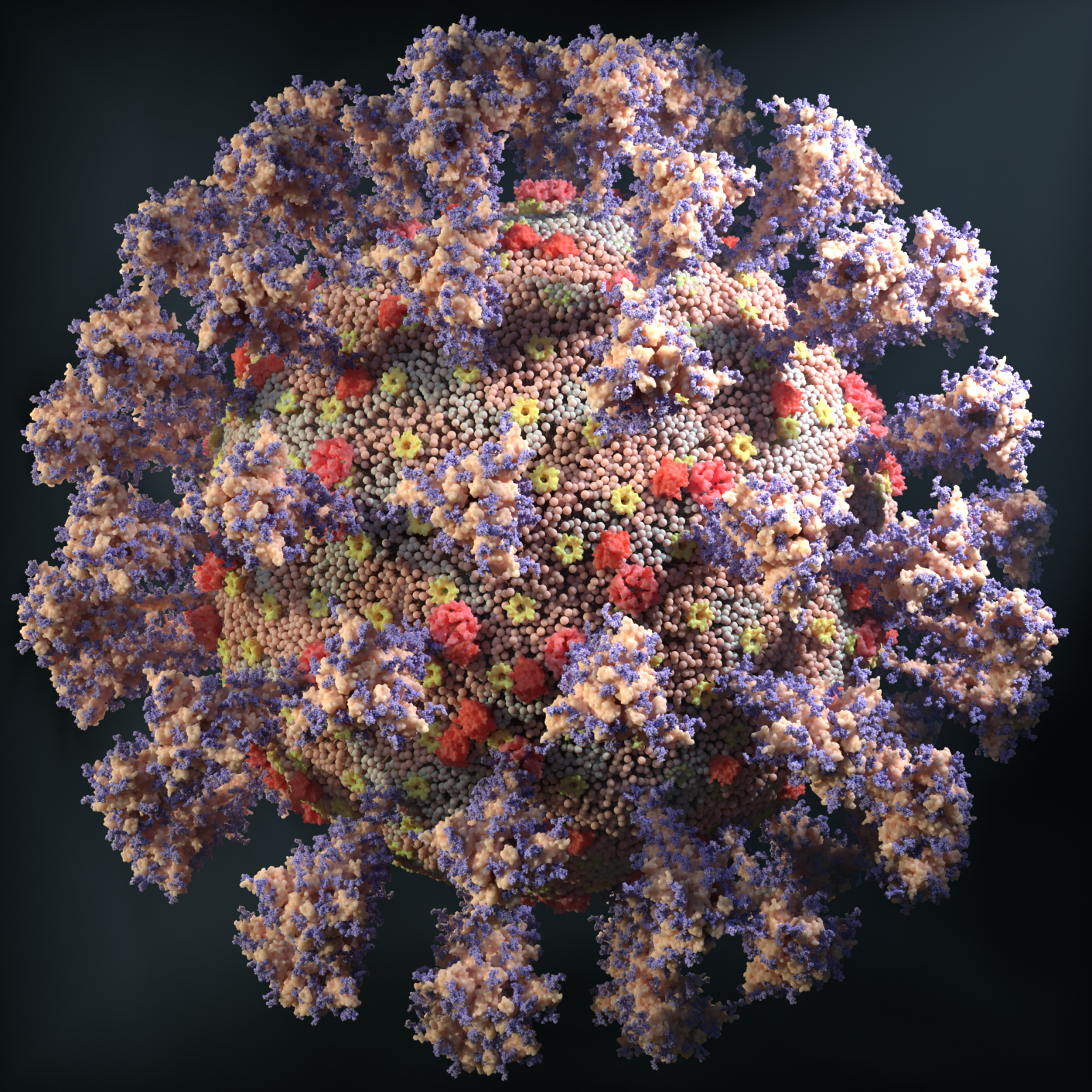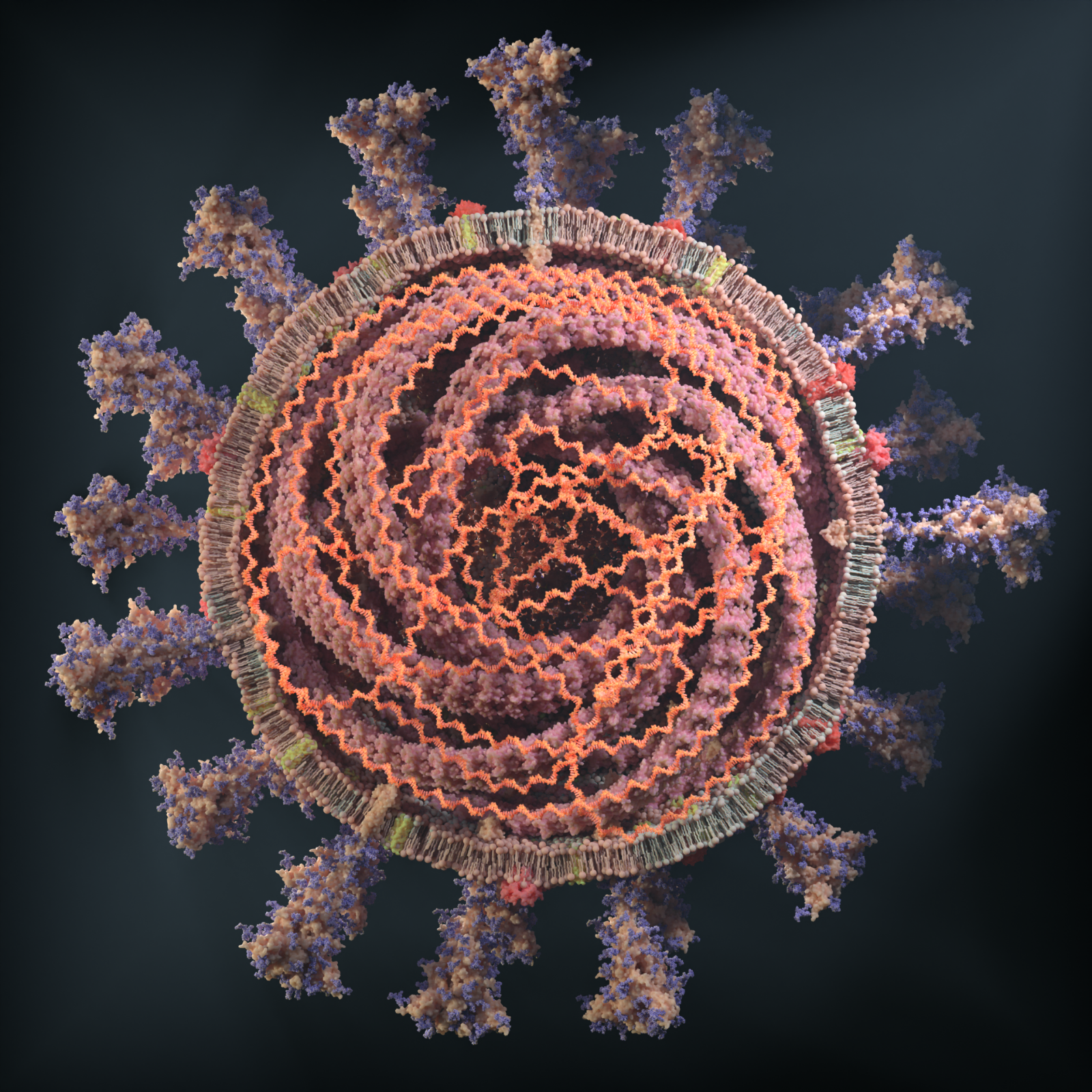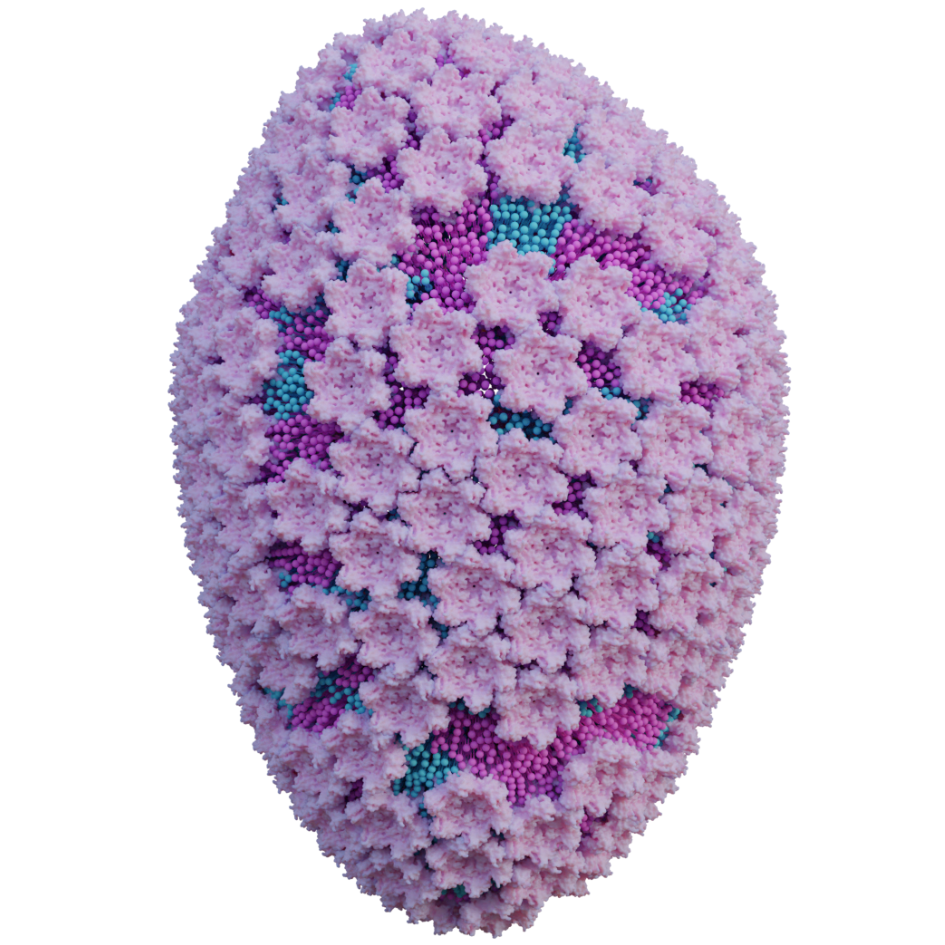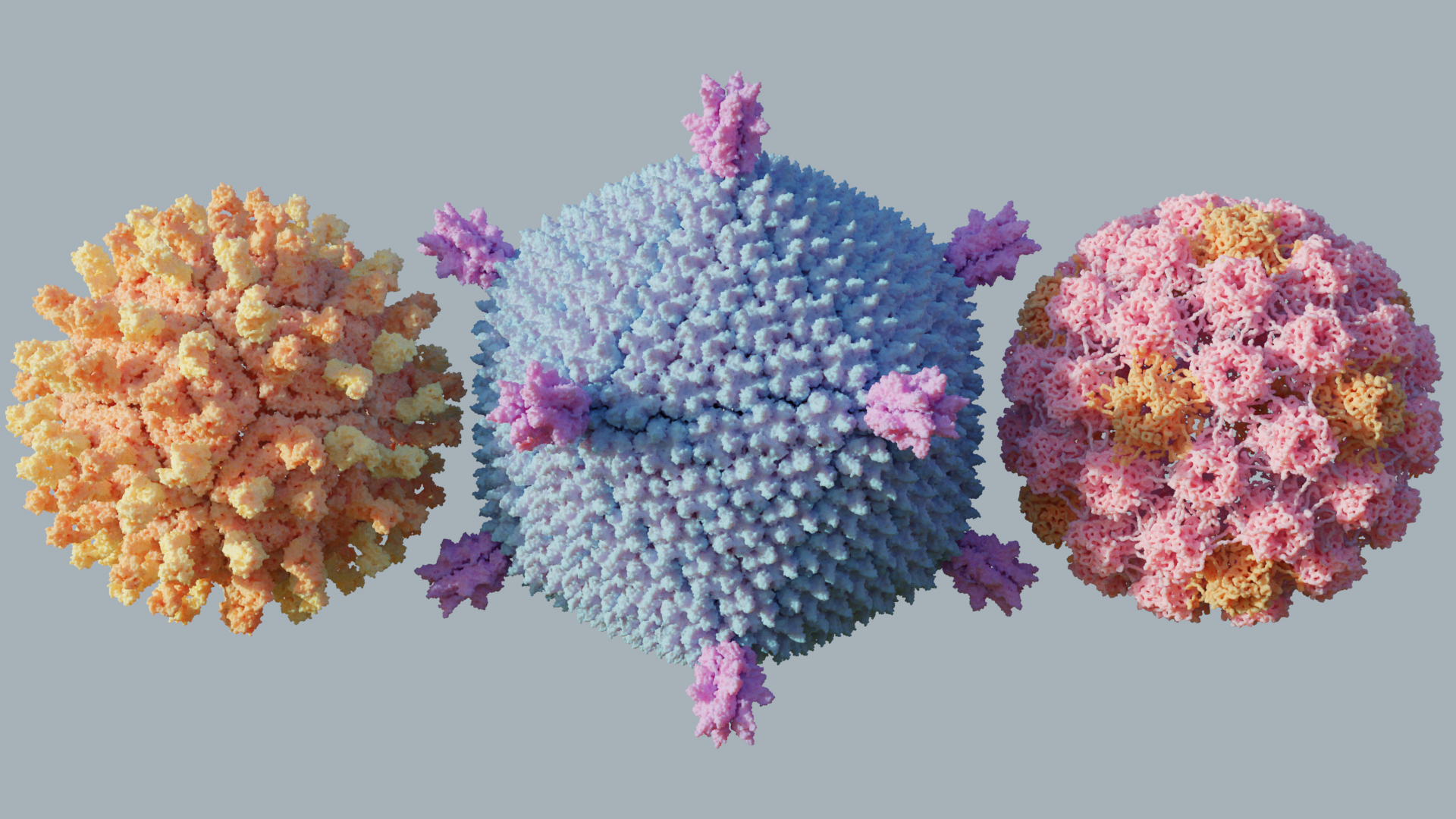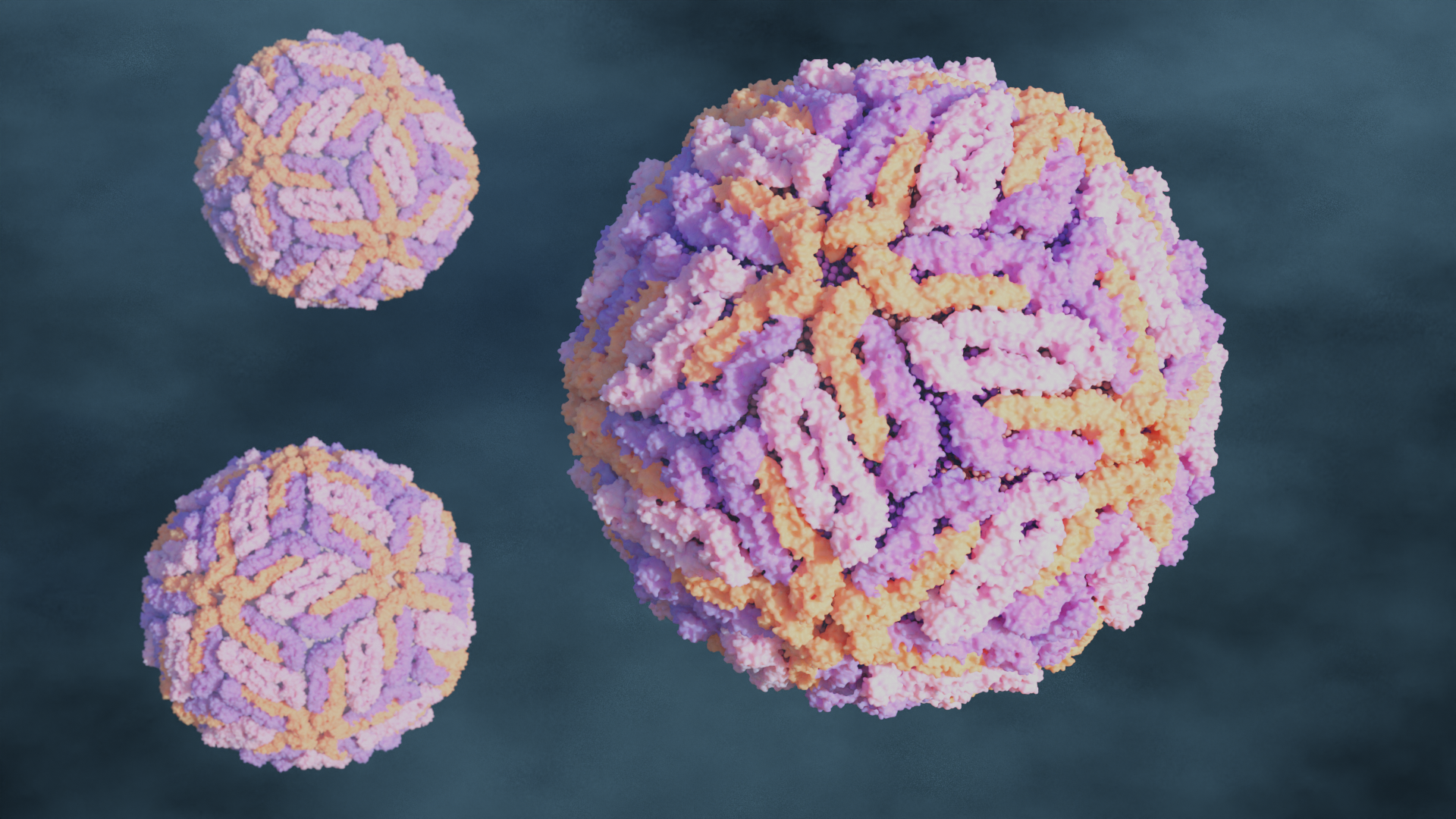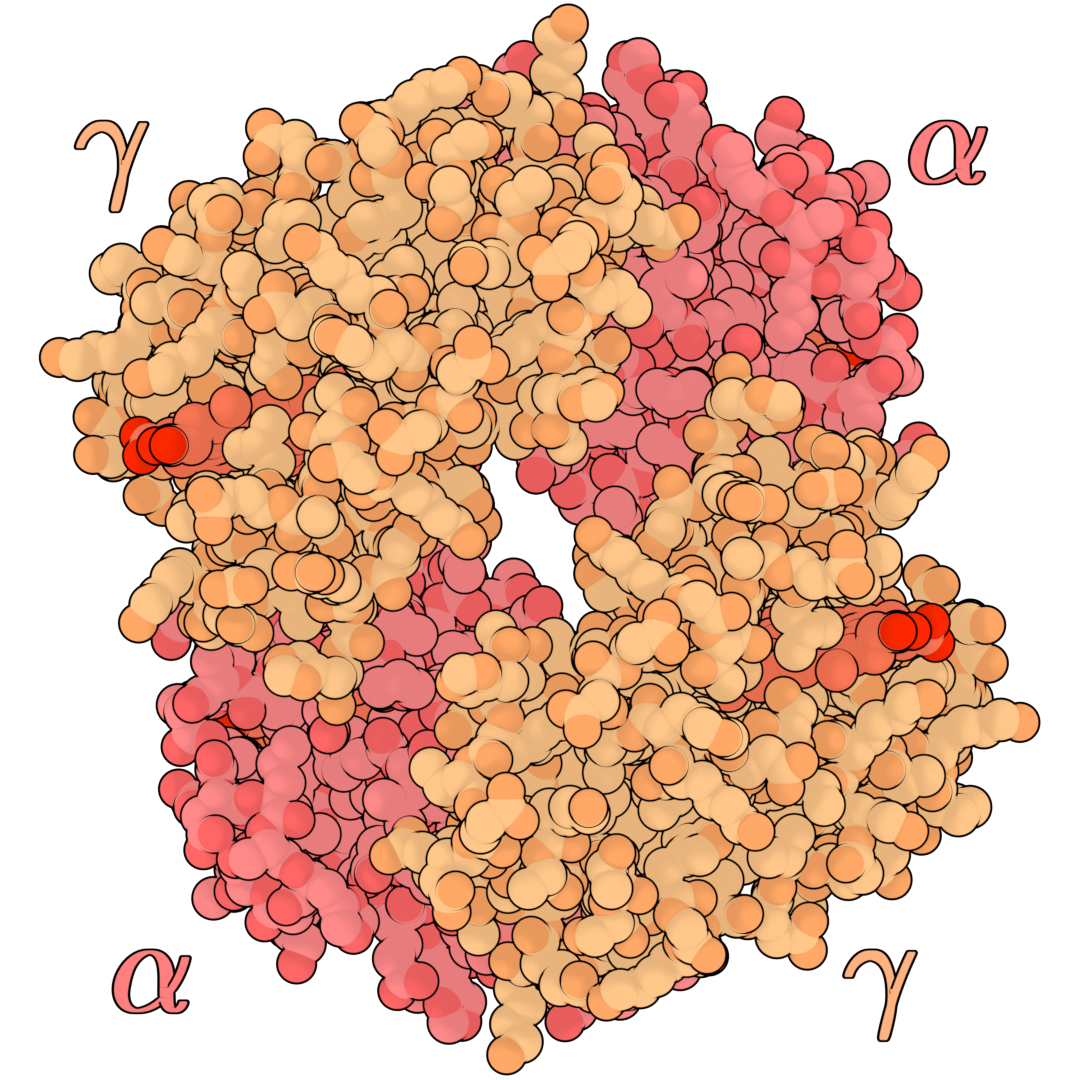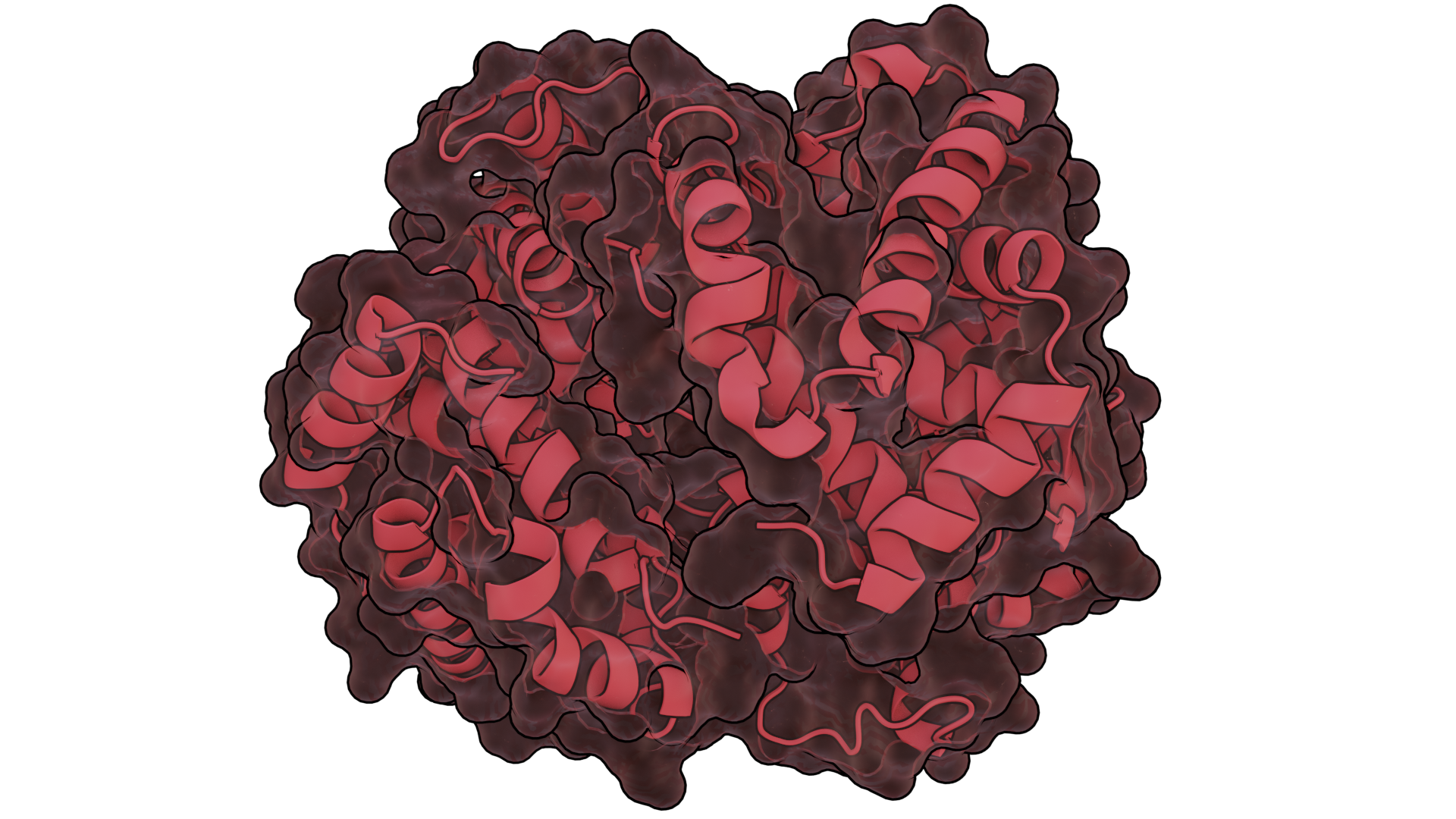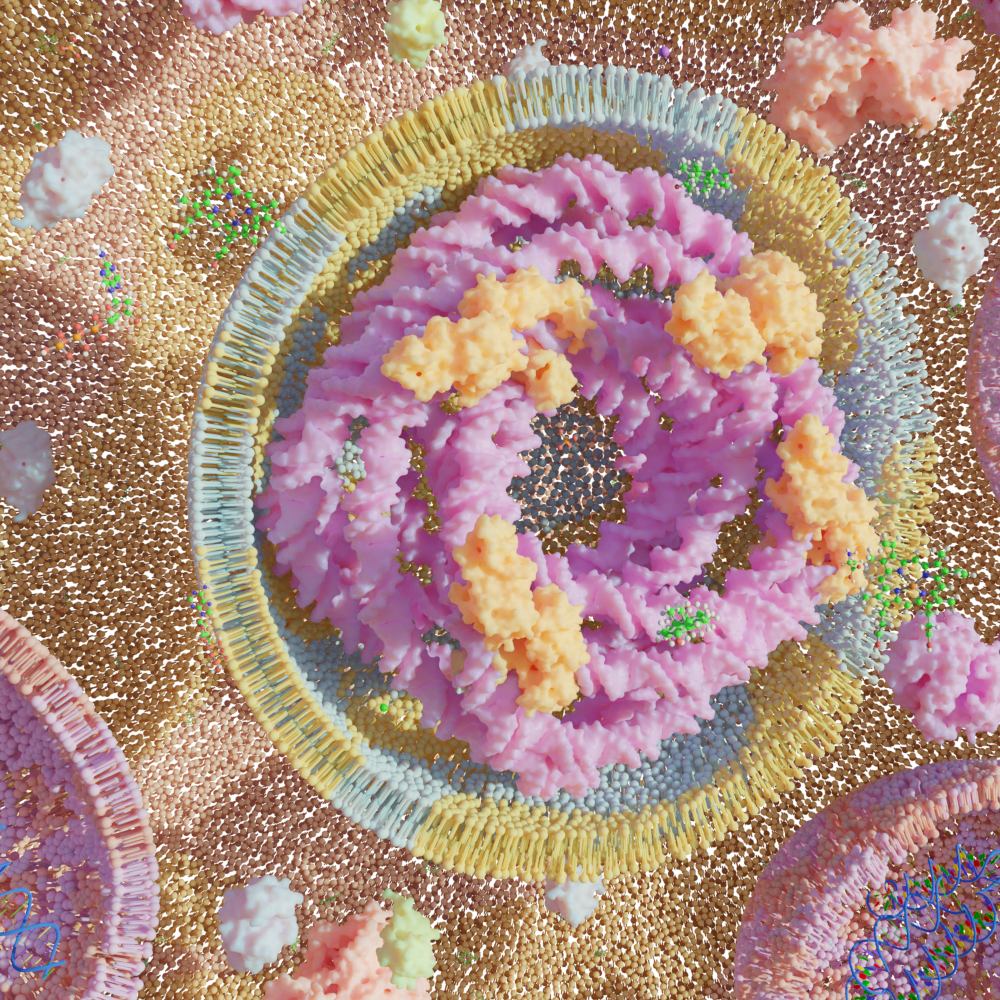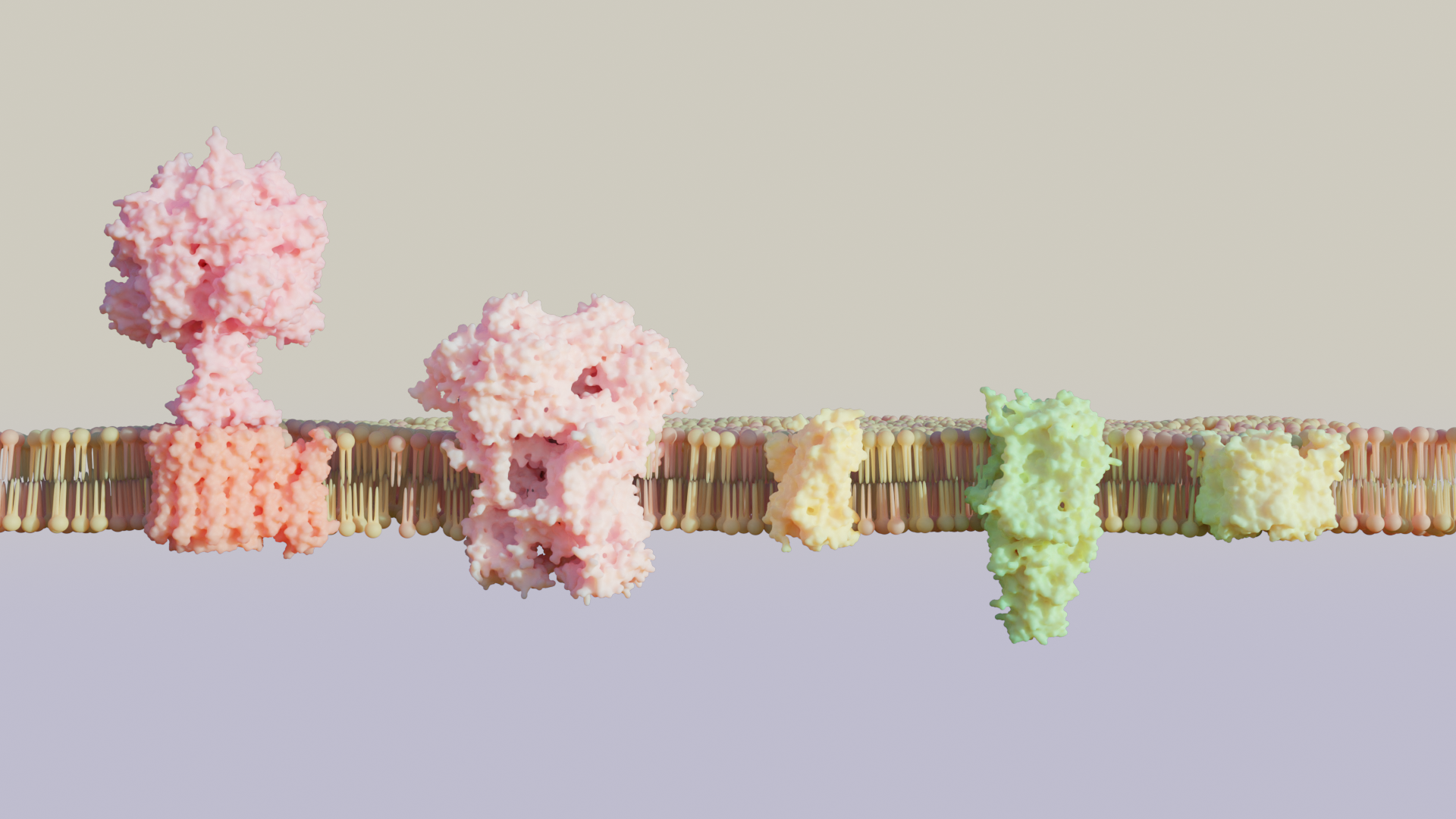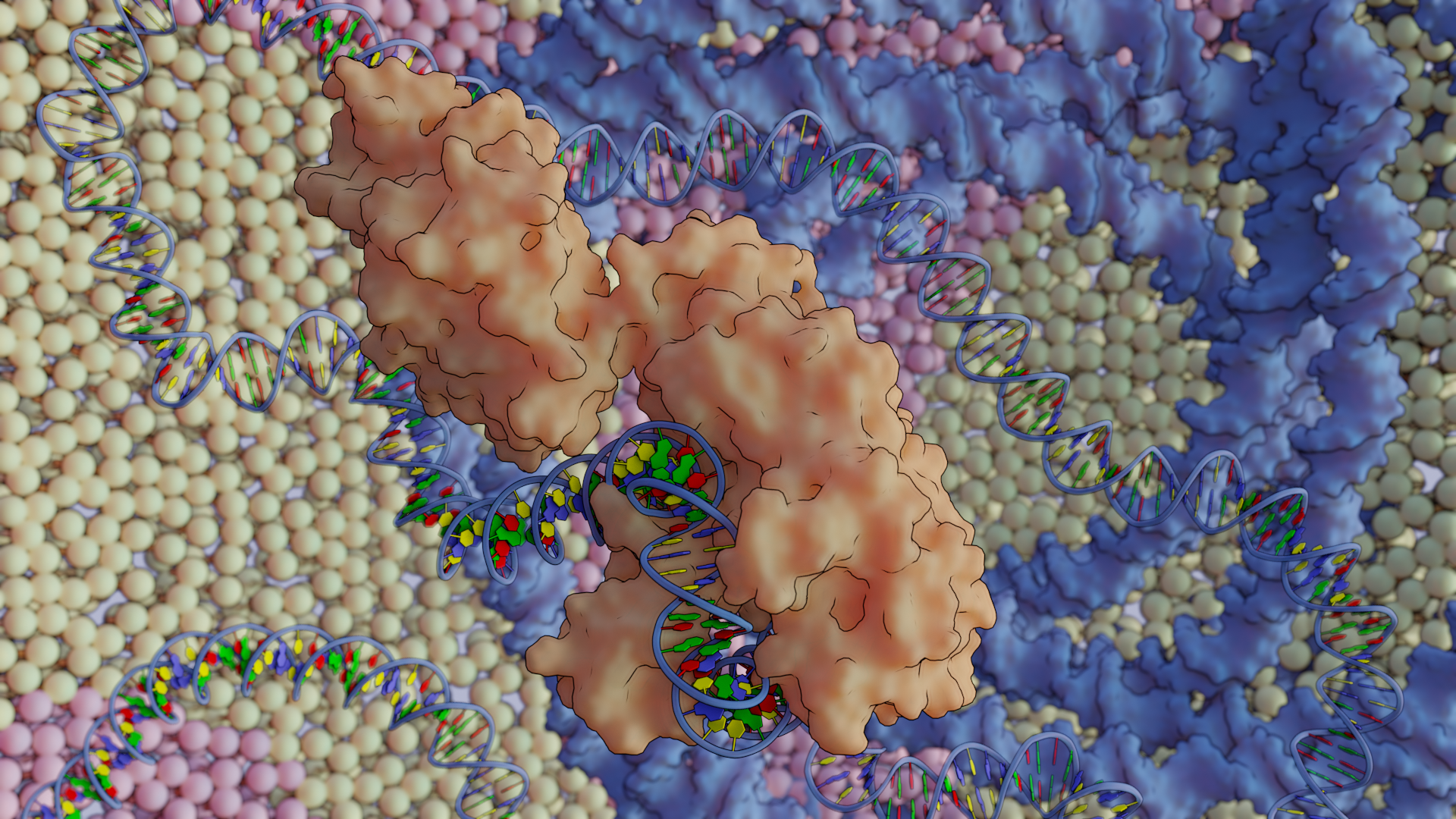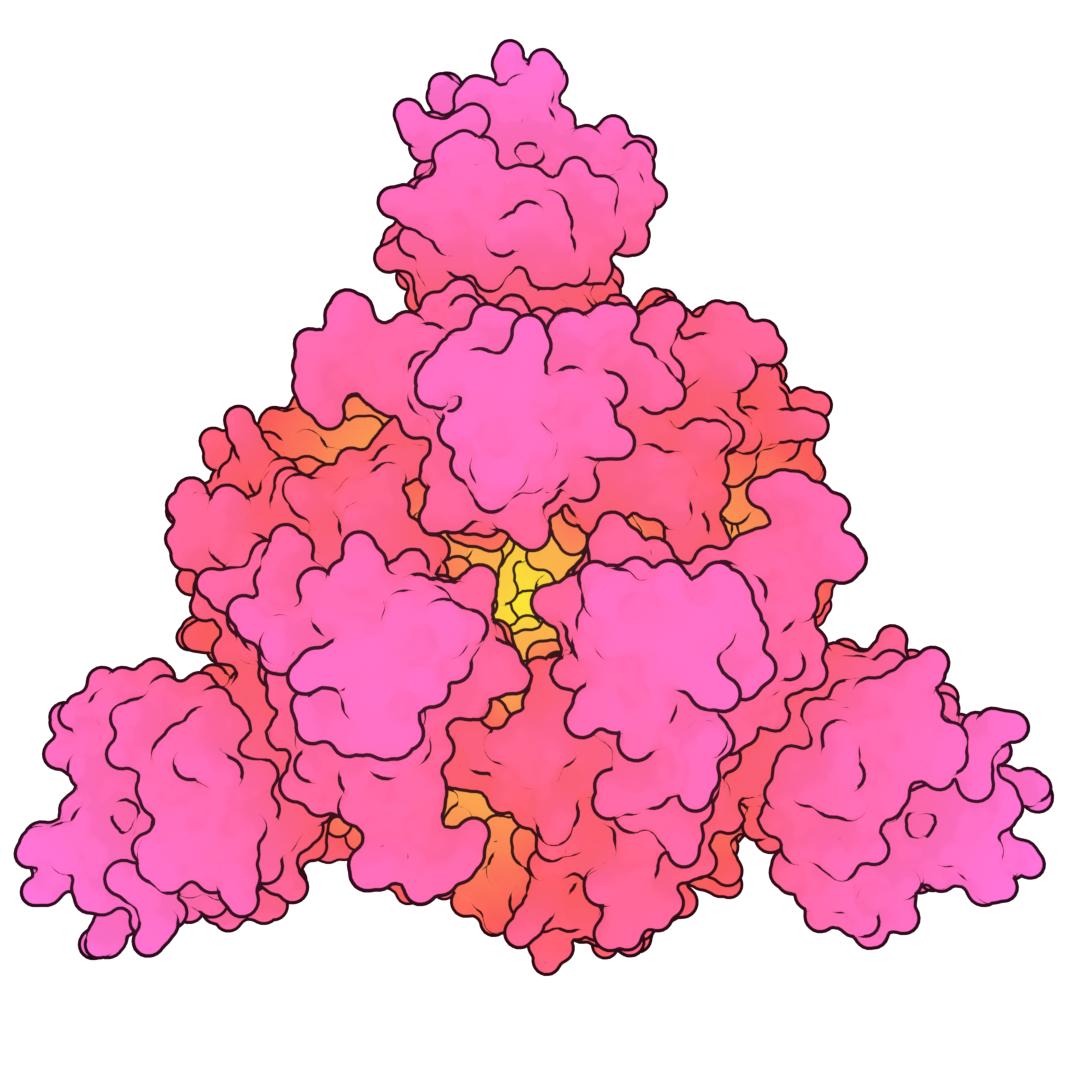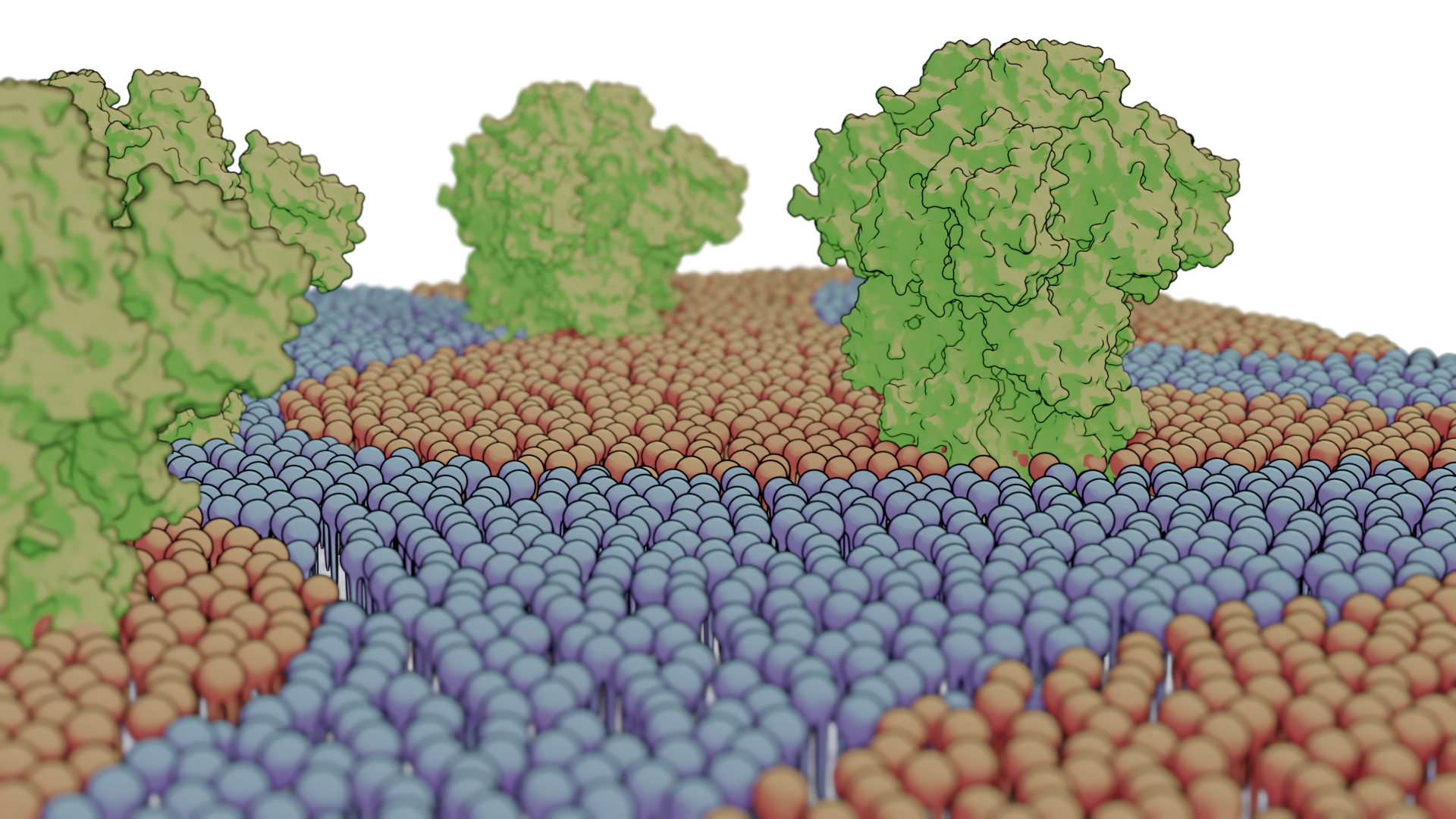Bio-Art Blender

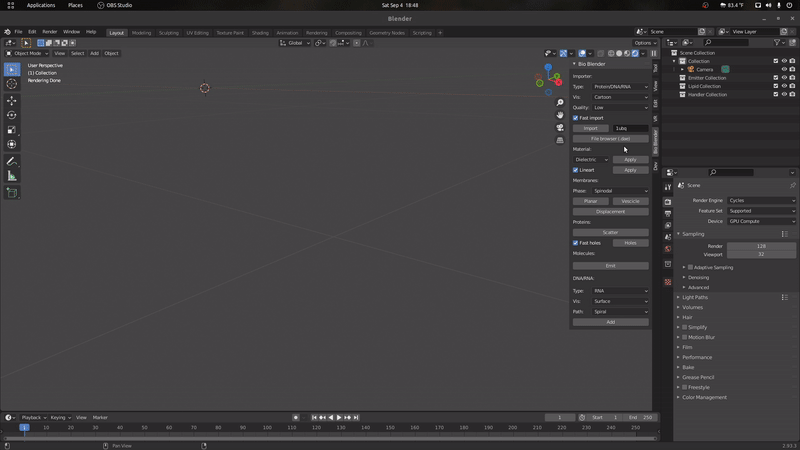
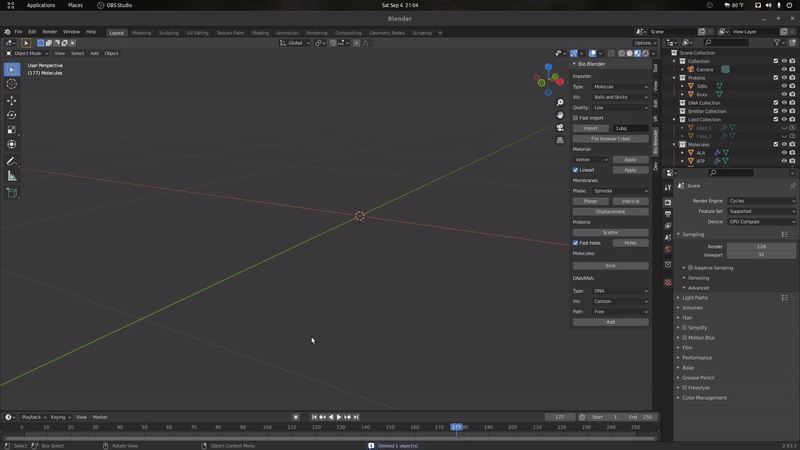
This add-on is designed to create accurate molecular and cellular visualizations. It improves the workflow by making it easier to import proteins, DNA, RNA, and ligands from the Protein Data Bank. Different visualization modes (cartoon, surface, etc.) can be selected, and the meshes are also cleaned automatically after importing. This also speeds up the process for 3D printing these structures. This add-on also uses the new geometry nodes to generate one or two-component membranes automatically with scientifically accurate phases. The initial structure of the membranes can be either planar or spherical, and its size and cross-section can be controlled procedurally. Modification of the initial meshes can be done to achieve any shape needed, but requires knowledge of 3D modeling. The membranes can also be animated with one click. A group of selected proteins can then be scattered on top of these membranes. DNA/RNA can also be added to the scene as a surface or as a cartoon model, the cartoon model was modeled to work perfectly with subdivision and the array modifier. A selection of predefined curves can be selected to achieve DNA/RNA structures very quickly. This add-on also simulates the effect of diffusion using a boids system, usually applied to a list of selected ligands. Finally, the add-on also includes a list of selected PBR materials that can be applied at the same time to all the selected objects. For Eevee only line art can also be added and removed at the same time to all the selected objects, the thickness can also be modified procedurally. In general, the overall idea is to significantly improve the workflow and make it easy to quickly achieve visualizations and animations that correctly describe the biological processes inside of cells or to generate art based on the intricate shapes found in biology. Although this workflow was designed with cells as the main idea, all the operators can in principle be used for any meshes. For example, you could have a monkey head and scatter spheres around it. You could also apply any of the materials and line art simultaneously to any mesh you wish or even generate a boid system with a specific target with one click.
In order to have the full functionality of the importer, you will also need to install open-source PyMOL and MeshLab, instructions are provided in the documentation. The commercial PyMOL version requires a special license if you used the add-on for production make sure you use the open-source version.
Importer
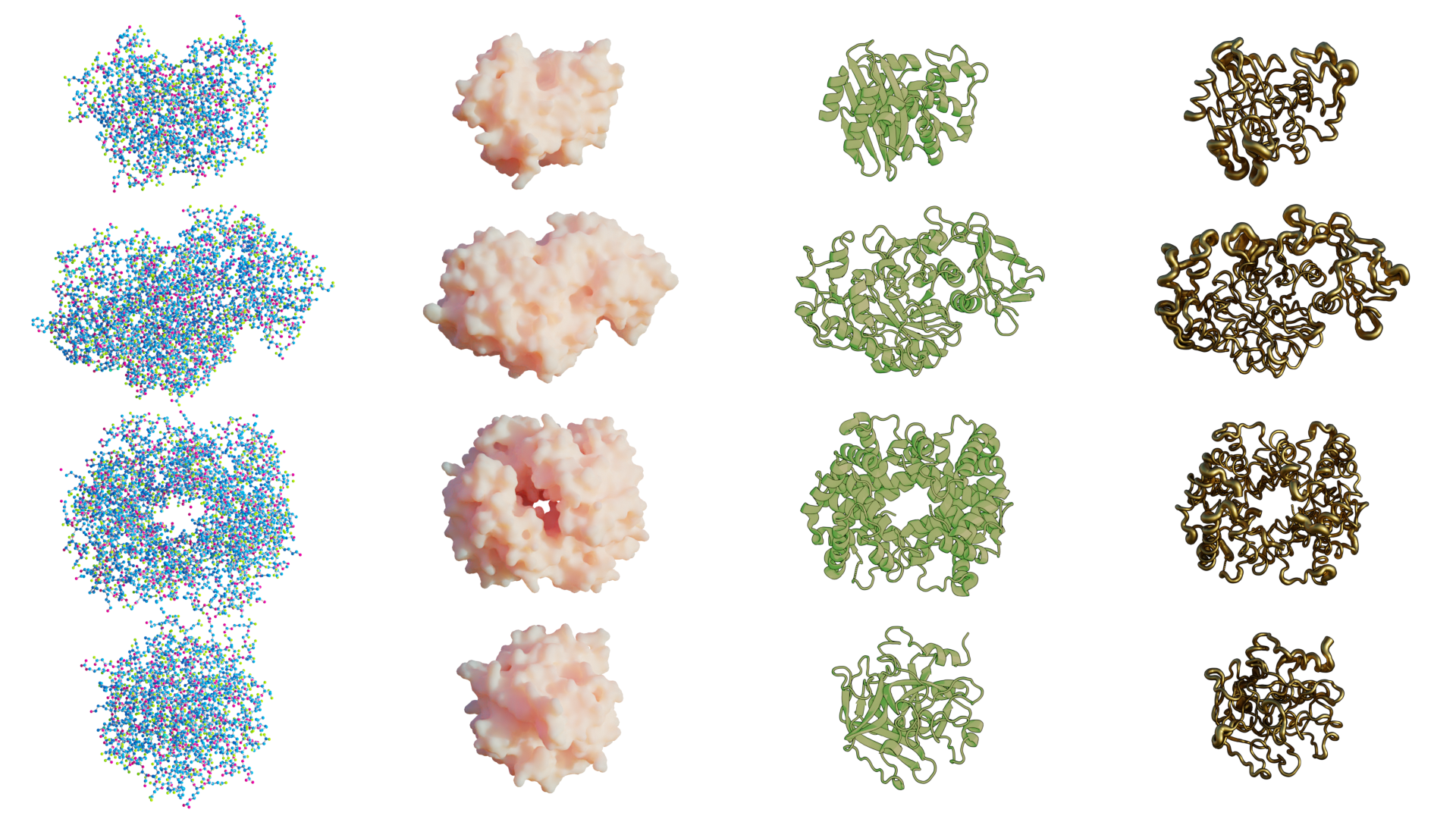
 This add-on simplifies and speeds up the process of importing proteins and ligands from the Protein Data Bank into Blender. It also cleans the meshes making them much more usable and even prepared for 3D printing. Simply by typing as many PDB IDs separated by a comma, all the desired proteins or molecules can be imported with one click. You can also change the visualization type to one of 5 selected presets including surface, cartoon and balls and sticks. You can also import both molecules and polymers found within the same file and with different visualization types.
This add-on simplifies and speeds up the process of importing proteins and ligands from the Protein Data Bank into Blender. It also cleans the meshes making them much more usable and even prepared for 3D printing. Simply by typing as many PDB IDs separated by a comma, all the desired proteins or molecules can be imported with one click. You can also change the visualization type to one of 5 selected presets including surface, cartoon and balls and sticks. You can also import both molecules and polymers found within the same file and with different visualization types.
Proteins and Ligands
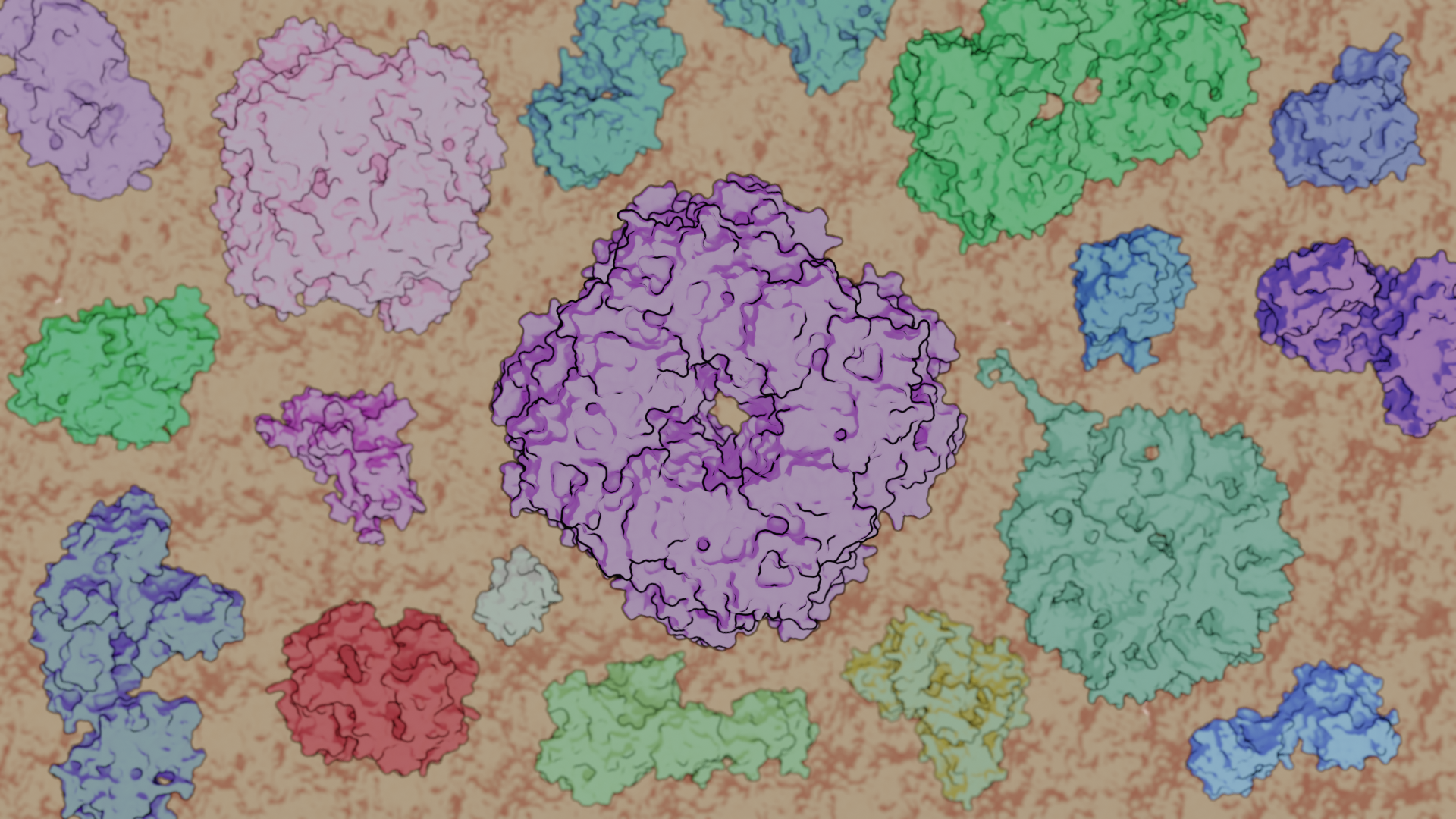
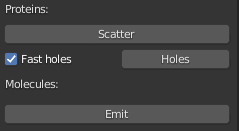 This add-on lets you scatter selected proteins or molecules on top of any other object and creates individual settings for each scattered object. This can be used in combination with the easy generation of membranes (see below) to scatter proteins on top of planar membranes or vesicles. You can also generate quick animations of diffusing molecules along the membranes or within a fluid by emitting a collection of selected molecules. This can also be used with proteins to generate a desired random distribution of all the selected proteins inside the scene. This can be used to rapidly replicate the complexity of the membrane surface found in all cells (see gallery). Since everything is procedural, the distribution, density, cross-section, and scale of the scattered objects can be modified non-destructively. The add-on also includes an option of generating automatic holes to the membranes based on the scattered proteins, and it works great with membrane-bound proteins that are symmetric and even asymmetric proteins if the fast holes are deselected. However, due to some limitations in the current 2.93 version of geometry nodes (GN) this feature might fail in some cases, so please treat it as experimental. On the bright side, the field's implementation of GN of version 3.0 will have full functionality.
This add-on lets you scatter selected proteins or molecules on top of any other object and creates individual settings for each scattered object. This can be used in combination with the easy generation of membranes (see below) to scatter proteins on top of planar membranes or vesicles. You can also generate quick animations of diffusing molecules along the membranes or within a fluid by emitting a collection of selected molecules. This can also be used with proteins to generate a desired random distribution of all the selected proteins inside the scene. This can be used to rapidly replicate the complexity of the membrane surface found in all cells (see gallery). Since everything is procedural, the distribution, density, cross-section, and scale of the scattered objects can be modified non-destructively. The add-on also includes an option of generating automatic holes to the membranes based on the scattered proteins, and it works great with membrane-bound proteins that are symmetric and even asymmetric proteins if the fast holes are deselected. However, due to some limitations in the current 2.93 version of geometry nodes (GN) this feature might fail in some cases, so please treat it as experimental. On the bright side, the field's implementation of GN of version 3.0 will have full functionality.
Membranes
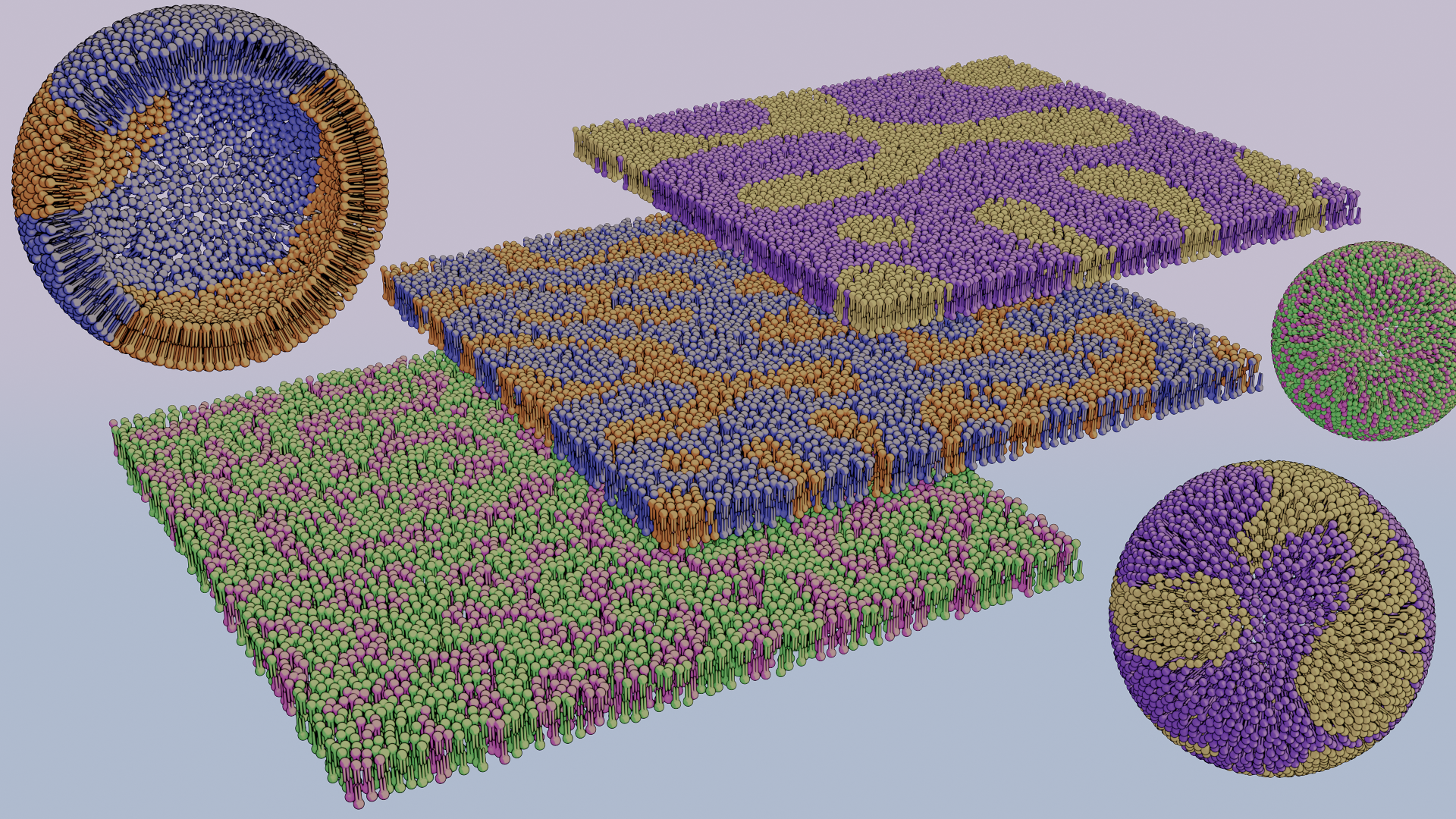
 The add-on includes a fast importer of biological membranes with two components that can be modified by changing each of the two lipids. The default shapes follow a plane and a sphere, but the underlying geometry can be modified to generate any desired biological membrane. The scale of the two-component texture can also be modified procedurally with sliders and can be either a spinodal decomposition or a distribution that resembles a domain formation. The membranes can be modified procedurally by changing the scale as well as the cross-section. The cross-section slider is useful to showcase the inside of the cells and can be animated along with all the other sliders. There is an option to automatically add a predefined displacement to incorporate surface bumps that resemble the ones found in real life. This option also adds a handle to animate the displacement, making it extremely easy and fast to generate motion of all the lipids within the membrane. The lipids and membranes were also designed to match the scale of all the imported proteins to correctly represent what is seen in biology (4.8-5.0 nm thickness). This thickness can be modified with the Z-scale slider and increasing the lipid length of the lipid tail.
The add-on includes a fast importer of biological membranes with two components that can be modified by changing each of the two lipids. The default shapes follow a plane and a sphere, but the underlying geometry can be modified to generate any desired biological membrane. The scale of the two-component texture can also be modified procedurally with sliders and can be either a spinodal decomposition or a distribution that resembles a domain formation. The membranes can be modified procedurally by changing the scale as well as the cross-section. The cross-section slider is useful to showcase the inside of the cells and can be animated along with all the other sliders. There is an option to automatically add a predefined displacement to incorporate surface bumps that resemble the ones found in real life. This option also adds a handle to animate the displacement, making it extremely easy and fast to generate motion of all the lipids within the membrane. The lipids and membranes were also designed to match the scale of all the imported proteins to correctly represent what is seen in biology (4.8-5.0 nm thickness). This thickness can be modified with the Z-scale slider and increasing the lipid length of the lipid tail.
Viruses

 This add-on includes an operator that makes it extremely fast to generate viruses. It takes advantage of all the symmetries found in viruses to create a biological assembly based on an individual unit cell. This can be used for any symmetry, but especially for icosahedral and spiral capsids. In practice, it would be impossible to import these assemblies into Blender, however, taking advantage of the protein importer, one can simply import the symmetric unit cell, and then by selecting generate assemble the entire capsid will be generated without creating any more polygons. Therefore, one can then duplicate the virus and have any number of high-quality copies without compromising the performance or the detail of these viral capsids. For spiral capsids, it can be combined with the DNA/RNA (see below) to create a spiral shield around coiled up DNA and again can be animated with a build modifier to expose the inside of the spiral capsid.
This add-on includes an operator that makes it extremely fast to generate viruses. It takes advantage of all the symmetries found in viruses to create a biological assembly based on an individual unit cell. This can be used for any symmetry, but especially for icosahedral and spiral capsids. In practice, it would be impossible to import these assemblies into Blender, however, taking advantage of the protein importer, one can simply import the symmetric unit cell, and then by selecting generate assemble the entire capsid will be generated without creating any more polygons. Therefore, one can then duplicate the virus and have any number of high-quality copies without compromising the performance or the detail of these viral capsids. For spiral capsids, it can be combined with the DNA/RNA (see below) to create a spiral shield around coiled up DNA and again can be animated with a build modifier to expose the inside of the spiral capsid.
DNA/RNA
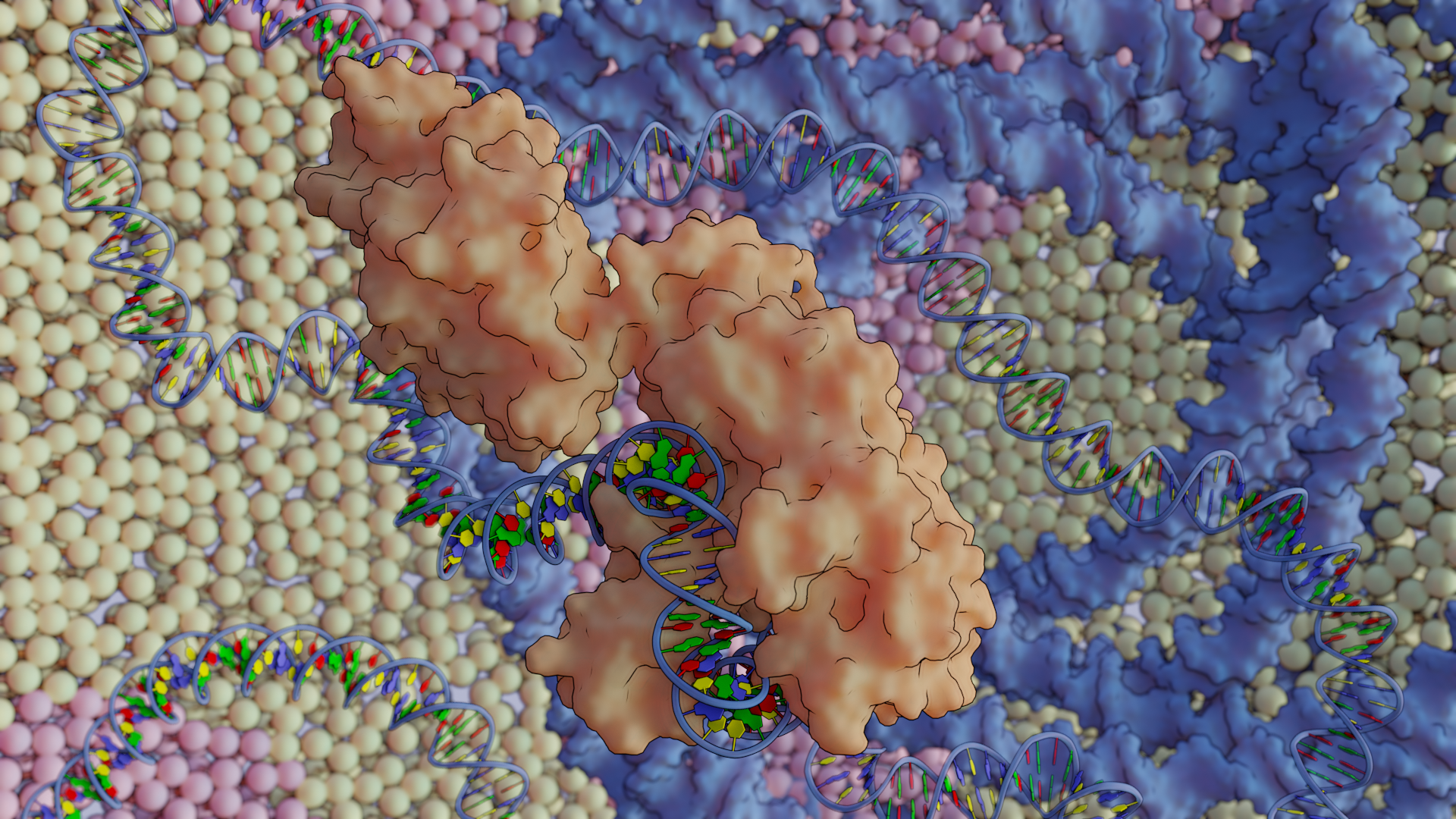
 The add-on also includes a based model of DNA and RNA represented as a surface or as a cartoon. The cartoon model was created to work with subdivision surface and an array modifier and also has been colored to follow the standard nucleic base convention but can be easily modified if needed. Based on this, one can rapidly import DNA or RNA into the scene and create different shapes if using the free mode under the path. It also includes a selection of 6 predefined paths that make it easy to import coiled up DNA/RNA that resembles the nucleoid of a bacteria or the spiral DNA in viruses or even coiled DNA found inside the nucleus.
The add-on also includes a based model of DNA and RNA represented as a surface or as a cartoon. The cartoon model was created to work with subdivision surface and an array modifier and also has been colored to follow the standard nucleic base convention but can be easily modified if needed. Based on this, one can rapidly import DNA or RNA into the scene and create different shapes if using the free mode under the path. It also includes a selection of 6 predefined paths that make it easy to import coiled up DNA/RNA that resembles the nucleoid of a bacteria or the spiral DNA in viruses or even coiled DNA found inside the nucleus.
Materials
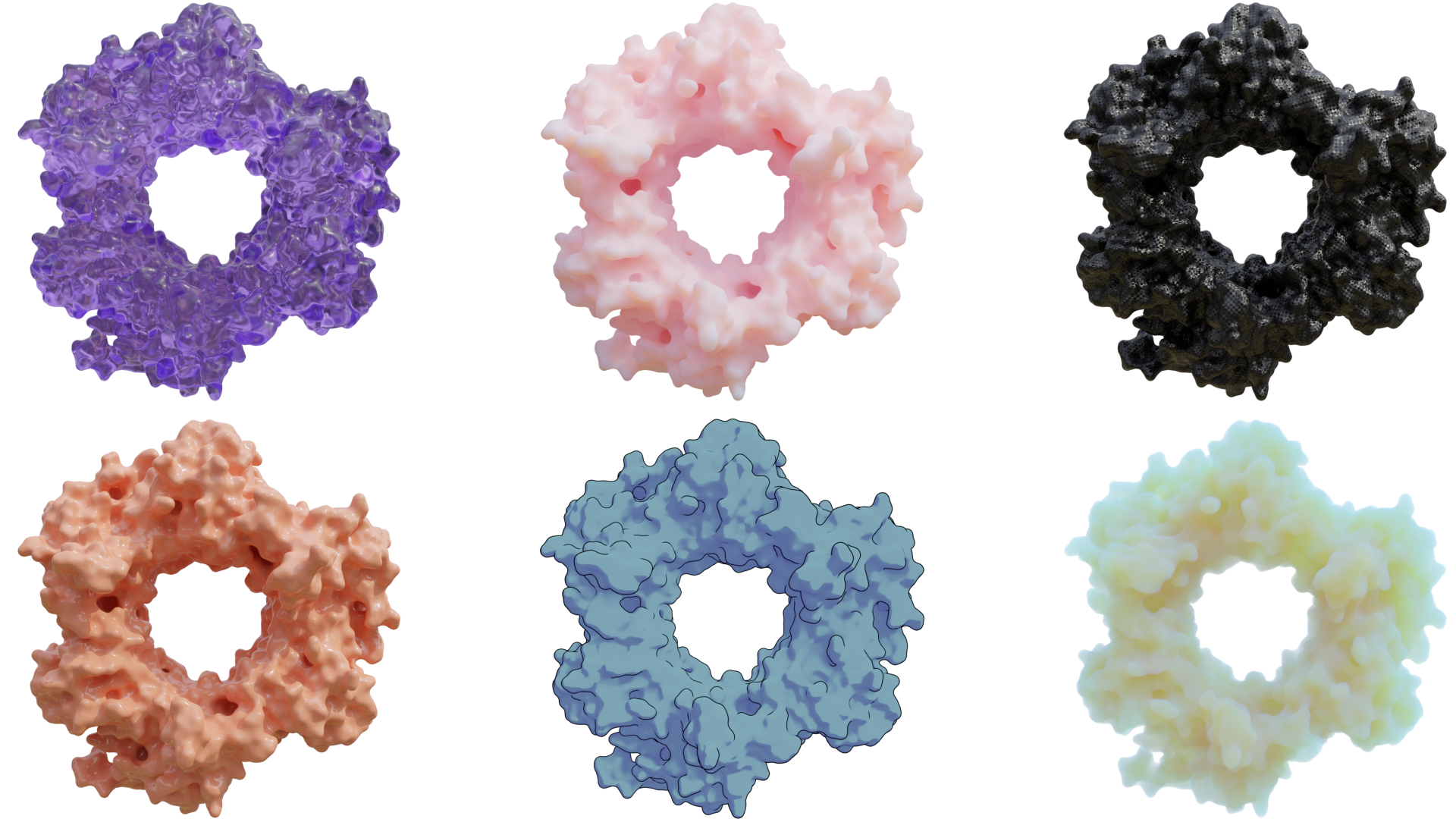
 The add-on includes 14 PBR materials that can be instantly applied to all objects within a selection. It also includes an option to add a line-art to all the selected objects (only works in Eevee). The line-art works great in combination with the cartoon shader. Some PBR materials are simple, but others are quite complex. They also span a wide range of materials that work great with proteins but I also included other materials that may not be realistic on biological systems but still add an artistic element to the visualizations. I will highlight two materials that improve the workflow significantly. The first one is the vertex/vertex (real) material. This material, when used in combination with the "slow import" option, already colors the proteins based on chains and the molecules based on atom types. The other material is the 3D print material that can be used for any object to create previsualization of how the 3D object will look like after printing it prior to exporting it to the slicer, this also has the benefit that it provides a real to life light reflection when using it with cycles, therefore is more realistic than what is usually showcase in the slicer.
The add-on includes 14 PBR materials that can be instantly applied to all objects within a selection. It also includes an option to add a line-art to all the selected objects (only works in Eevee). The line-art works great in combination with the cartoon shader. Some PBR materials are simple, but others are quite complex. They also span a wide range of materials that work great with proteins but I also included other materials that may not be realistic on biological systems but still add an artistic element to the visualizations. I will highlight two materials that improve the workflow significantly. The first one is the vertex/vertex (real) material. This material, when used in combination with the "slow import" option, already colors the proteins based on chains and the molecules based on atom types. The other material is the 3D print material that can be used for any object to create previsualization of how the 3D object will look like after printing it prior to exporting it to the slicer, this also has the benefit that it provides a real to life light reflection when using it with cycles, therefore is more realistic than what is usually showcase in the slicer.
Version 1.3 New Features
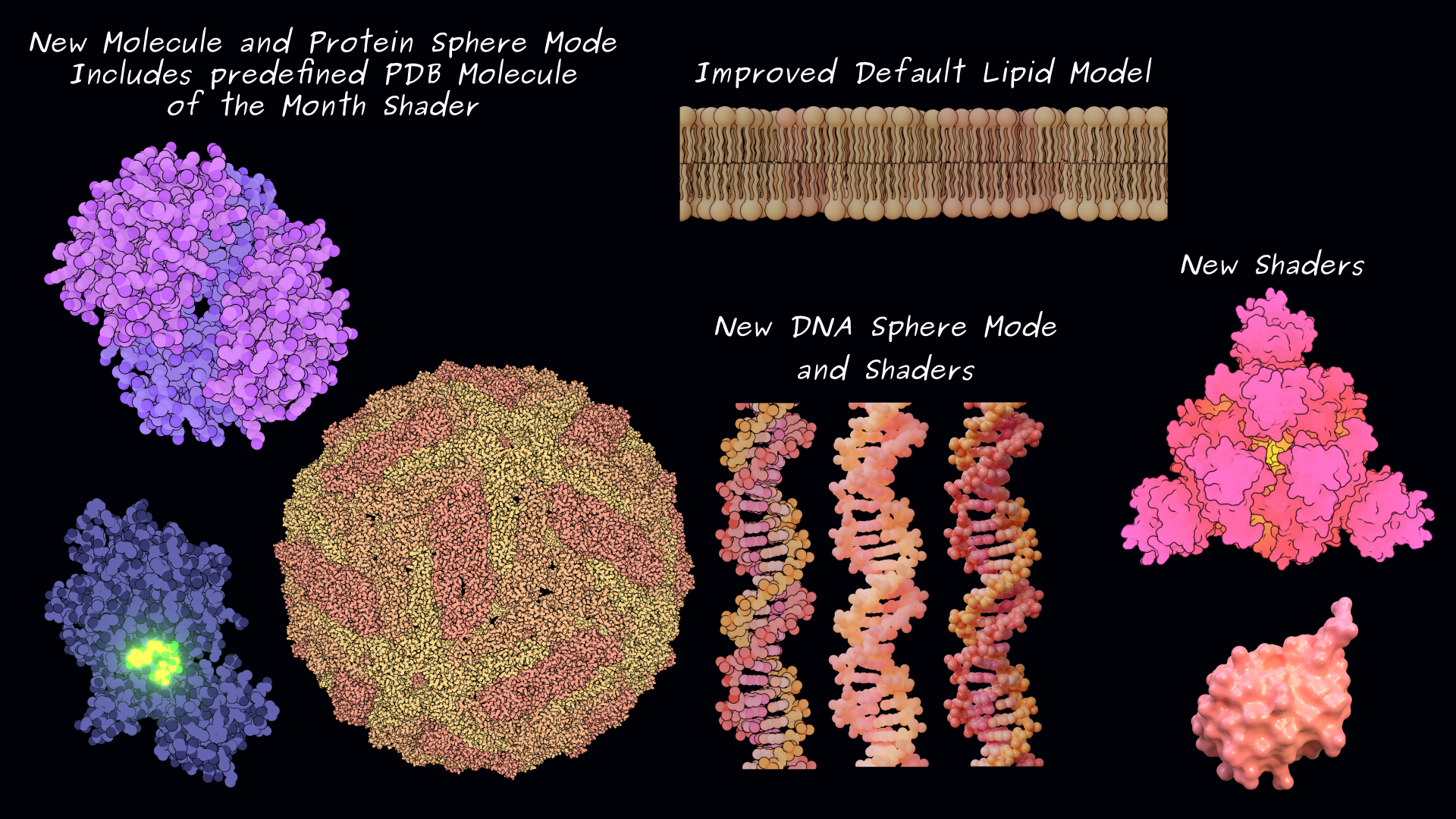
Notes:
- Two brand new shaders to be used with any object.
- Modified the default lipid geometry to better represent kinks and work better with subdivision.
- Support to import protein and molecules as spheres or cubes with different levels of quality.
- Support for sphere mode also added to DNA/RNA.
- Added three new materials for DNA to be used with spheres and surface modes.
- Overall bug fixes.
